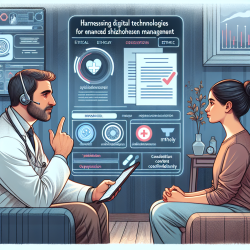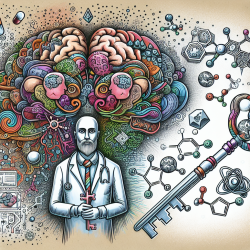Introduction
In the rapidly evolving landscape of digital healthcare, the integration of digital technologies for managing schizophrenia is gaining momentum. The research article "Digital Technologies for Schizophrenia Management: A Descriptive Review" highlights the potential and challenges of these technologies. This blog aims to guide practitioners on leveraging these findings to enhance their practice and encourage further research.
Understanding the Potential of Digital Technologies
Digital technologies, including wearable devices, smartphone applications, and telepsychiatry, offer a range of diagnostic and treatment options tailored to individual needs. These tools can improve access to mental health services, particularly for patients in rural areas, and enhance the accuracy of diagnostics. However, the integration of these technologies into clinical practice must be approached with caution, considering the ethical implications and the need for professional supervision.
Key Ethical Considerations
The implementation of digital technologies in psychiatry raises several ethical concerns:
- Lack of Evidence: There is a need for robust evidence on the efficacy and impact of these technologies on self-perception.
- Safety Standards: Clear standards for the safe daily implementation of these technologies are lacking.
- Data Confidentiality: Ensuring the confidentiality of sensitive patient data is paramount.
- User-Centered Design: Technologies must be designed to meet the specific needs of patients with schizophrenia.
Integrating Technology with Professional Supervision
To maximize the benefits of digital technologies in schizophrenia management, it is crucial to integrate these tools with professional supervision rather than relying on them as standalone solutions. This approach ensures that patients receive comprehensive care while safeguarding their autonomy and privacy.
Encouraging Further Research
Practitioners are encouraged to engage in further research to address the gaps identified in the current literature. By exploring the long-term outcomes of digital technology use in schizophrenia management, practitioners can contribute to the development of more effective and ethical solutions.
Conclusion
The integration of digital technologies in schizophrenia management holds great promise for improving patient outcomes. However, it is essential to address the ethical challenges and ensure that these technologies are used responsibly and effectively. Practitioners play a vital role in this process by staying informed and actively participating in research and development.
To read the original research paper, please follow this link: Digital Technologies for Schizophrenia Management: A Descriptive Review.










